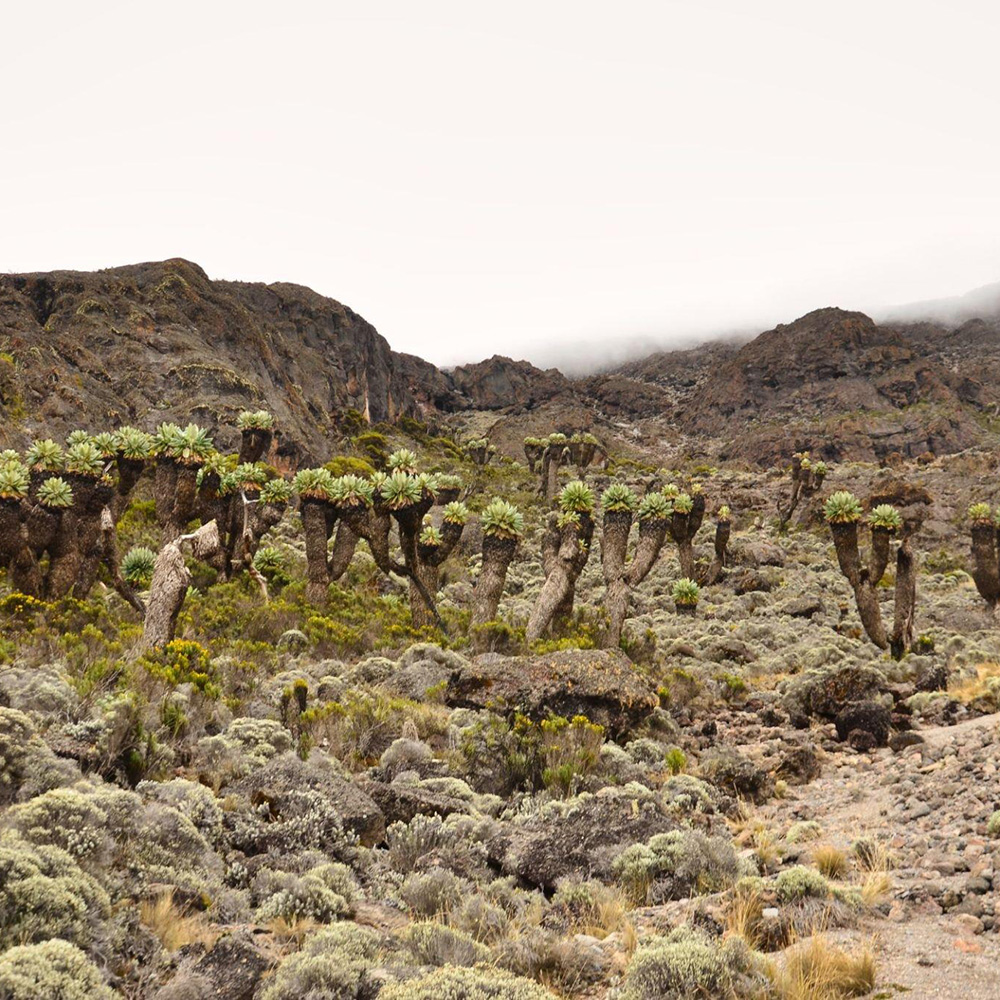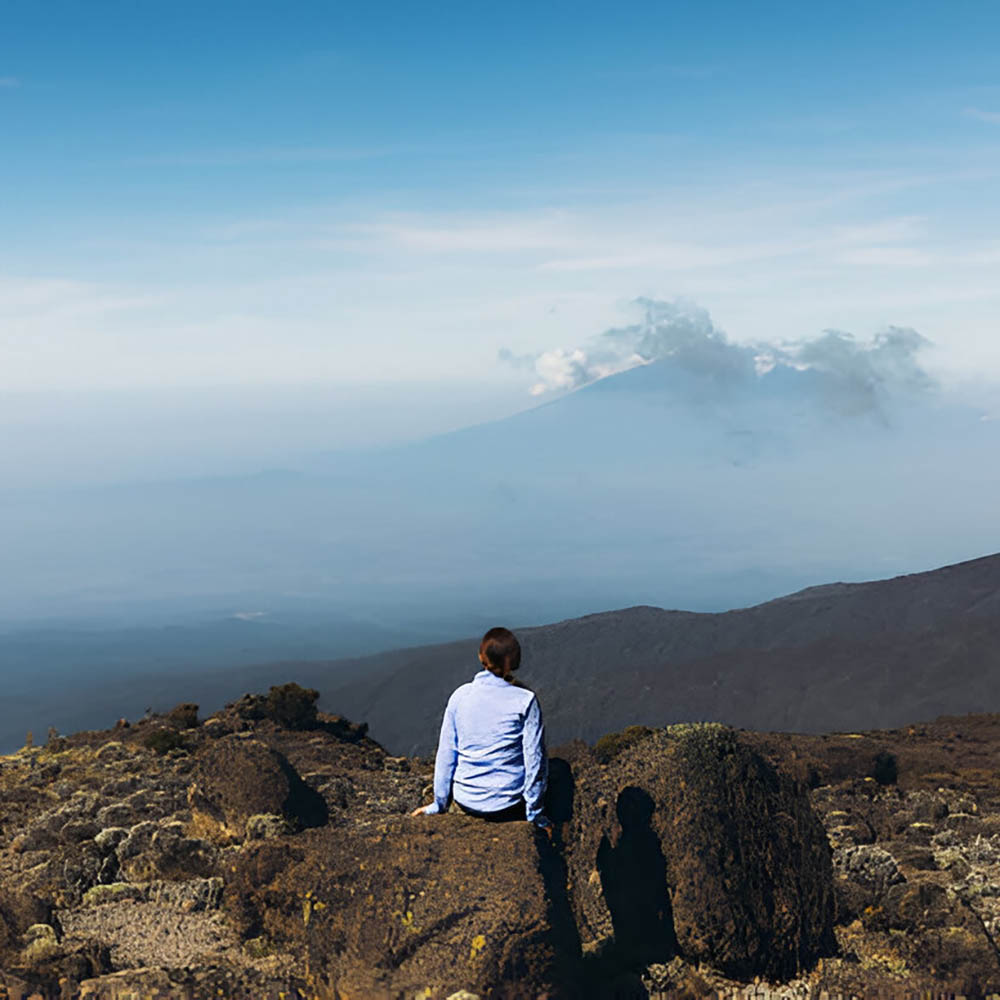Mount Kilimanjaro: Africa’s Tallest Mountain
Mount Kilimanjaro, a dormant volcano in northern Tanzania, stands at 5,895 meters (19,341 feet) and is the continent’s tallest mountain. Often considered one of the most accessible big-mountain climbs, around 35,000 people attempt to reach its summit, Uhuru Peak, each year.
The Rewards of Climbing Kilimanjaro
While the climb is challenging, the rewards are endless—panoramic views of Mawenzi’s jagged peaks, the vast Shira Plateau, and the distant horizons of Tanzania and Kenya. You’ll walk through Kilimanjaro’s five unique climate zones, from rainforest to alpine desert. Along the way, you'll encounter unusual vegetation, like the giant groundsel plant and delicate elephant flowers. Kilimanjaro is truly a snow-covered wonder on the equator.
The Importance of Safety and Experienced Guides
Though non-technical, the climb’s high altitude shouldn’t be underestimated. Altitude sickness is a real concern, so hiking with the best, most experienced guides and porters is essential for reaching the summit safely. We work only with guides who are trained in first aid and responsible tourism, ensuring both your safety and the welfare of the staff. Our guides operate with a ‘leave no trace’ policy, adhering strictly to environmental standards.
Popular Routes: Machame and Lemosho
Routes to the summit vary, with the Machame route being the most popular. This “Whiskey” route passes through rainforest, heather-moorland, and alpine desert, offering breathtaking views of Mount Meru, Tanzania’s second-highest mountain. While the route can be completed in six days, we recommend adding an extra day for better acclimatization and a higher chance of success. Another great option is the Lemosho route, which approaches from the west and offers a longer, eight-day trek for better altitude adjustment. This route gives trekkers the chance to see wildlife such as black-and-white colobus monkeys and crosses the Shira Plateau—a collapsed volcanic caldera.
Camping on Mount Kilimanjaro
Camping on Kilimanjaro is a rustic but fulfilling experience. Bright orange and gray tents serve as your base at each stop, and your porters will rush ahead to secure the best camping spots. Though the amenities are basic, the camaraderie around the mess tent makes each evening special. Meals are hearty, often featuring stews, plantains, and carbohydrates to keep energy levels high, while soups help maintain hydration. Though you may lose your appetite due to altitude sickness, it’s important to fuel your body for the climb ahead.
Best Time to Climb Mount Kilimanjaro
When to climb? The best times to tackle Kilimanjaro are from July to October or January to mid-March, avoiding the rainy seasons for the best chance of dry conditions.
A Journey Through Kilimanjaro’s Unique Climates
Kilimanjaro is a natural wonder and climbing it is a journey through multiple climates in just a few days. Whether you’re a novice or an experienced trekker, our experienced guides and support team will ensure you have the best possible chance of reaching the top and making unforgettable memories along the way.
Photos of Mount Kilimanjaro.







Mount Kilimanjaro Routes
Marangu Route
The Marangu Route, often referred to as the main route, is the most popular path to Kilimanjaro's summit. Its gradual ascent means no professional equipment is needed, and climbers stay in mountain huts equipped with basic necessities.
Accommodation includes 60 bunk beds at Mandara Hut (2,700m), 120 bunk beds at Horombo Hut (3,720m), and 60 bunk beds at Kibo Hut (4,700m). While mattresses and pillows are provided, climbers should bring their own sleeping bags. Each hut has communal dining halls, washrooms, and toilets. Typically, the round trip takes 5 days and 4 nights, but a 6-day itinerary is available for better acclimatization with an extra day at Horombo Hut.
Machame Route
The Machame Route is known for its stunning scenery and requires camping in mobile tents throughout the trek. This route is more strenuous and is better suited for adventurous hikers, usually taking a minimum of 6 days and 5 nights on the mountain.
Lemosho (Shira) Glades Route
The Lemosho Glades Route is among the least traversed ascent paths, largely due to its remote location and challenging access roads that require 4-wheel drive vehicles.
The higher elevation at the trailhead allows for a slower start, with chances to see buffalo and elephants on the first trekking day. This route covers the longest distance on Kilimanjaro and takes 7 days and 6 nights to complete. It’s ideal for experienced hikers, as the stunning views across the Shira Plateau make it a unique experience. Accommodation is in mountain tents, as there are no huts along this route.
Umbwe Route
The Umbwe Route, located in the south, is a 6-day and 5-night trek and is considered the most scenic yet challenging option on Kilimanjaro. The first two days are steep, muddy, and strenuous, making it suitable only for well-trained climbers.
While an acclimatization day is not typically included, it can be added for an extra day in the Karanga Valley. The descent follows the same path as the Mweka Route.
Rongai Route
The Rongai Route is the sole path on the northeastern side of Kilimanjaro, usually taking five nights to complete. Although it may not be as visually striking as the western routes, it offers a quieter experience with lower traffic.
This route maintains a sense of untouched wilderness and provides a different perspective by approaching Kilimanjaro from the north. Rongai is generally considered the easiest quality route on the mountain, making it a great choice for those seeking a solid climbing experience without extreme fitness requirements.
Explore our most popular Routes.

6 Days Machame Route.
Epic 6-day trek on Machame Route, stunning views, unforgettable adventure



6 Days Umbwe Route .
Challenging climb, steep trails, remote wilderness, and stunning Kilimanjaro views.

7 Days Machame Route
Stunning views, diverse terrains, challenging ascent, unforgettable summit...

Why travel with
Genau Adventure Safaris.
Frequently Asked Questions
The ideal months for climbing are from July to October and January to mid-March, avoiding the wetter seasons.
Most routes take between 5 to 9 days, depending on the chosen path and acclimatization needs.
While technical climbing gear isn't required, good hiking boots, warm clothing, and a quality sleeping bag are essential.
Success rates vary by route, but generally, the average is around 65-70%, depending on acclimatization and fitness levels.
There are no formal medical facilities, but most guides carry first-aid kits and some have training in mountain first-aid.
Climbing without a certified guide is not allowed. You must have an experienced team to ensure safety and adherence to park regulations.
Accommodations range from mountain huts on the Marangu Route to camping in tents on other routes
Essentials include a good backpack, waterproof clothing, layered clothing, sleeping bag, personal toiletries, and plenty of snacks.
Yes, altitude sickness is common. It's important to acclimatize properly and recognize symptoms to ensure a safe climb.
Follow your guide's instructions, who will have protocols in place for emergencies, including evacuation plans if necessary.





